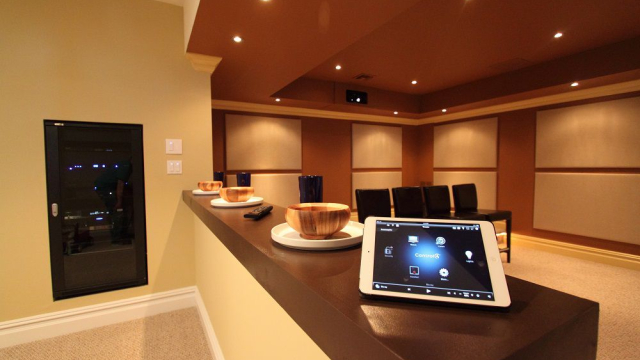Welcome to the world of smart lighting, where convenience, efficiency, and aesthetics meet to transform your living spaces. In today’s fast-paced world, the way we light up our homes has evolved significantly, thanks to the advent of smart technology. This blog will guide you through everything you need to know about smart lighting for home, ensuring it’s easy to understand and apply.
What is Smart Lighting?
Smart lighting refers to a lighting system that you can control using your smartphone, tablet, or voice commands through smart home assistants. These systems offer more than just the ability to turn your lights on and off remotely. They allow you to adjust brightness, change colors, set schedules, and create ambiance with just a few taps or voice commands.
The Convenience of Smart Lighting
Imagine controlling all the lights in your home without having to move an inch from your cozy couch. Smart lighting makes this possible. Whether you’re in bed and realize you forgot to turn off the kitchen lights or you’re on vacation and want to make it look like someone’s home for security, smart lighting has got you covered.
Energy Efficiency and Savings
Smart lighting is not only about convenience but also about being kind to our planet and your wallet. LED smart bulbs are much more energy-efficient than traditional bulbs, meaning they use less power and last longer. Plus, with the ability to control and schedule your lighting, you’ll never waste energy lighting an empty room again.

How to Set Up Smart Lighting in Your Home
Setting up smart lighting might sound techy, but it’s simpler than you think. You’ll need smart bulbs or smart light fixtures, a stable Wi-Fi connection, and possibly a central hub, depending on the system you choose.
Choosing the Right Smart Bulbs
There are many smart bulbs on the market, so how do you choose? Look for bulbs compatible with your smart home system (like Amazon Alexa, Google Assistant, or Apple HomeKit). Consider the bulb’s brightness, color options (if you want more than just white light), and energy efficiency.
The Role of a Hub in Smart Lighting
Some smart lighting systems require a central hub to connect all your smart bulbs. This hub connects to your home’s Wi-Fi network, allowing you to control your lights from anywhere. However, many newer models work without a hub, connecting directly to your Wi-Fi network, making setup even easier.
Enhancing Your Home with Smart Lighting
Smart lighting can do more than just light up a room. It can enhance the aesthetics of your home, improve security, and even have health benefits.
Creating the Perfect Ambiance
With smart lighting, you can adjust the brightness and color of your lights to match any mood or activity. Whether you’re hosting a dinner party, settling down for movie night, or need focused light for work, smart lighting can create the perfect ambiance.
Smart Lighting for Security
Use smart lighting to your advantage for home security. Set schedules to turn lights on and off when you’re away, or use motion sensors to light up dark areas around your home when movement is detected. This not only deters potential intruders but also provides safety by lighting up pathways at night.
Health Benefits of Smart Lighting
Exposure to different types of light throughout the day can affect our circadian rhythms. Smart lighting can mimic natural light patterns, with cooler, brighter light during the day to boost energy and alertness, and warmer, dimmer light in the evening to signal your body it’s time to wind down, promoting better sleep.
Also refer :- Smart Lighting for Home: A Bright Idea for Every Household
Smart Lighting Controls and Integration
Controlling your smart lighting is incredibly user-friendly. Most systems offer a mobile app, but you can also integrate them with smart home assistants for voice control. Imagine adjusting your lights without lifting a finger, simply by asking your smart assistant.
Mobile Apps for Total Control
The mobile app that comes with your smart lighting system is the control center for your lights. You can turn lights on and off, adjust brightness and color, set schedules, and even create scenes for different activities or times of day.
Voice Control and Smart Home Integration
For the ultimate convenience, integrate your smart lighting with a smart home assistant like Amazon Alexa, Google Assistant, or Apple HomeKit. This allows you to use voice commands to control your lights, making things like adjusting the lights while cooking or turning off all lights before bed effortless.
Tips for Getting the Most Out of Your Smart Lighting
To truly enhance your living spaces with smart lighting, here are some tips:
- Start Small: You don’t have to outfit your entire home at once. Start with a few bulbs in key areas and expand as you get used to the system.
- Use Schedules and Automations: Take advantage of scheduling features to automate your lighting based on your daily routines.
- Experiment with Colors and Scenes: If your smart bulbs have color options, play around with different colors and scenes to find what works best for different activities and moods.
- Consider Outdoor Lighting: Smart lighting isn’t just for indoors. Smart outdoor lighting can enhance security and create a welcoming ambiance for outdoor spaces.
Conclusion
Note :- If you need more ideas about smart lighting for home, you can find them on this urweb.eu




